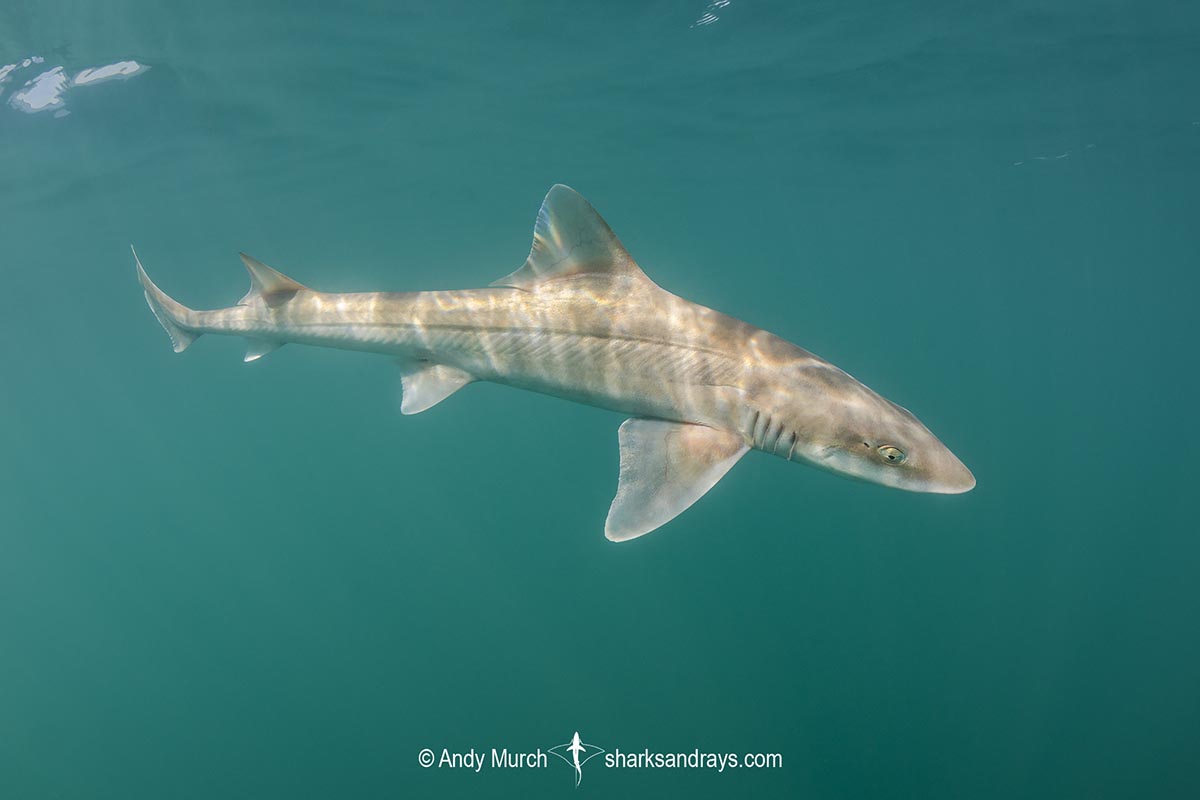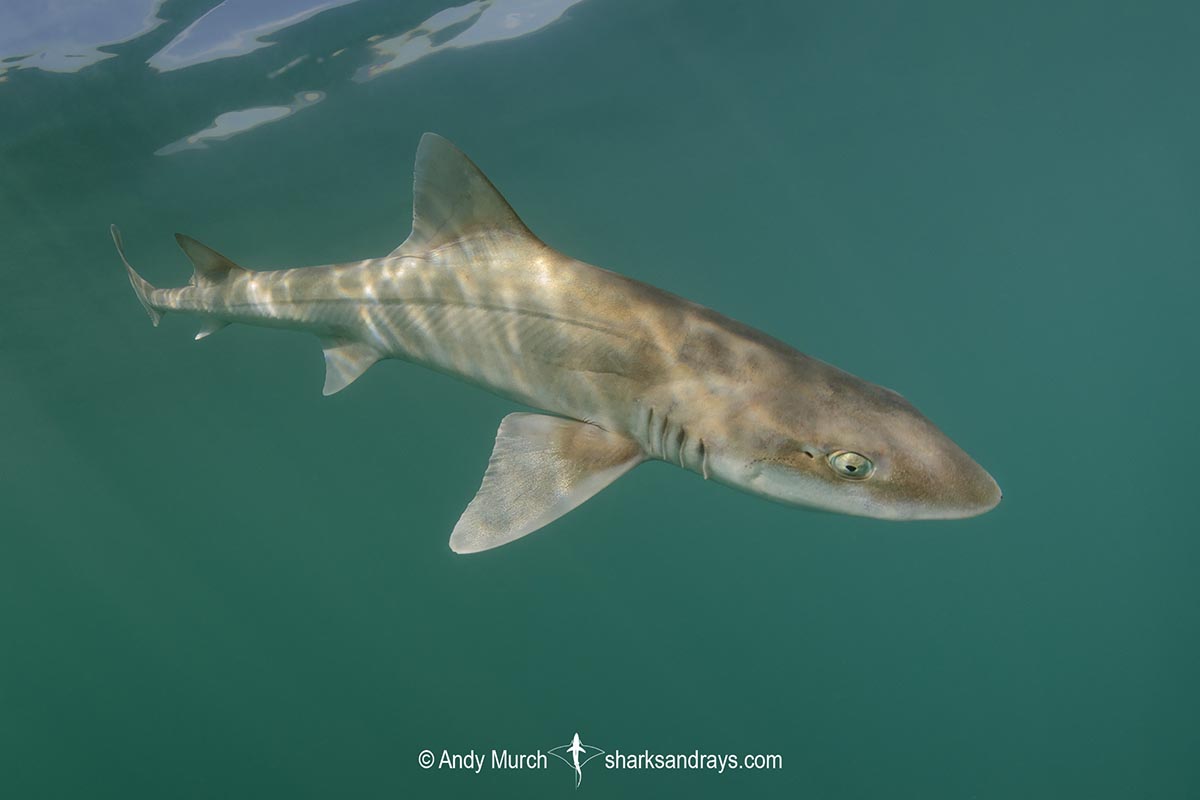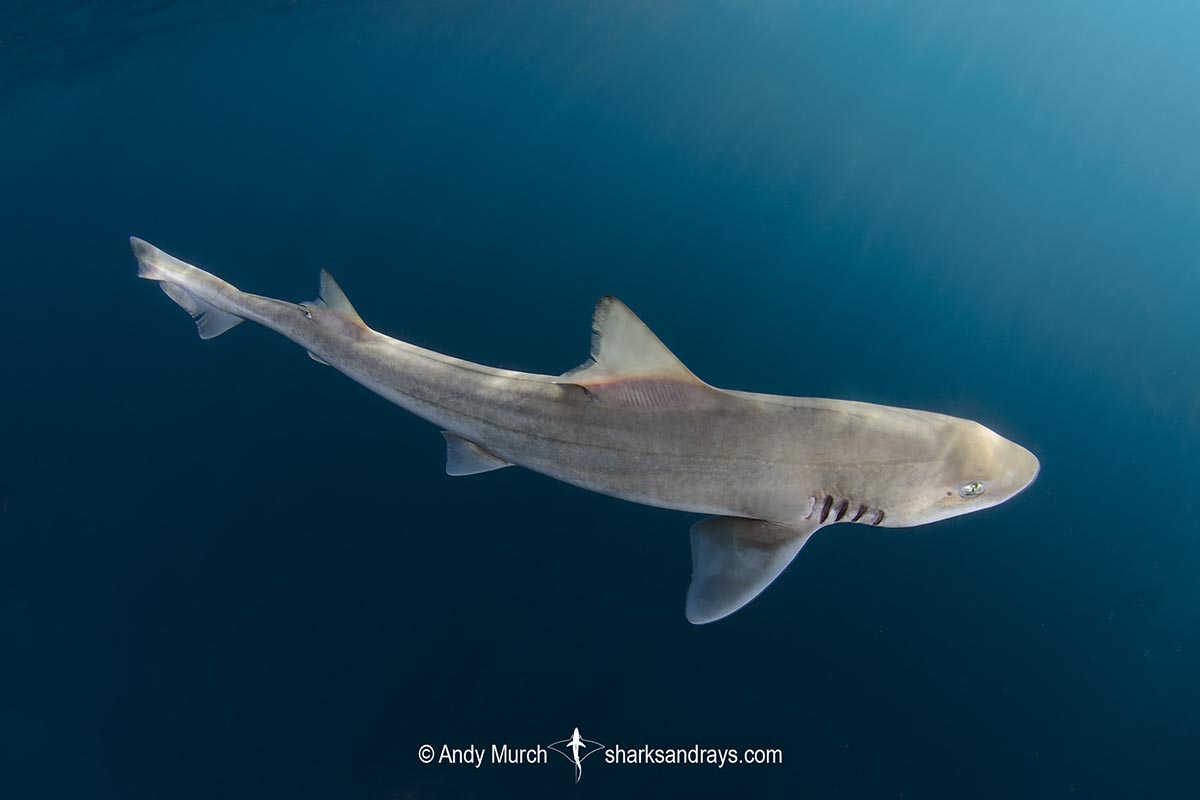Common names
Gray Smoothhound Shark (USA), Grey Smoothhound.
Binomial
Mustelus californicus.
Synonyms
None.
Identification
Body slender. Snout fairly long and pointed. Upper and lower labial furrows are of similar length. Small, visible spiracle behind eye. First dorsal fin origin posterior to pectoral fin free rear tip. Second dorsal fin much larger than anal fin. First and second dorsal fin margins un-frayed. Lower caudal lobe indistinct. Dorsal coloration grey-brown. Fins may be slightly dusky with a subtle white margins.
Interestingly, there are several reports of albinism in this species. Albino sharks are not that uncommon but multiple albinos of the same species is unusual. All of the records are from animals collected in Elkhorn Slough, California. One adult female contained ten embryos, five of which were albino.
Size
Maximum length 116cm. In 1972 Miller and Lea reported a 163cm specimen but this was probably an error based on the average size of other adults. Size at birth 23-30cm.
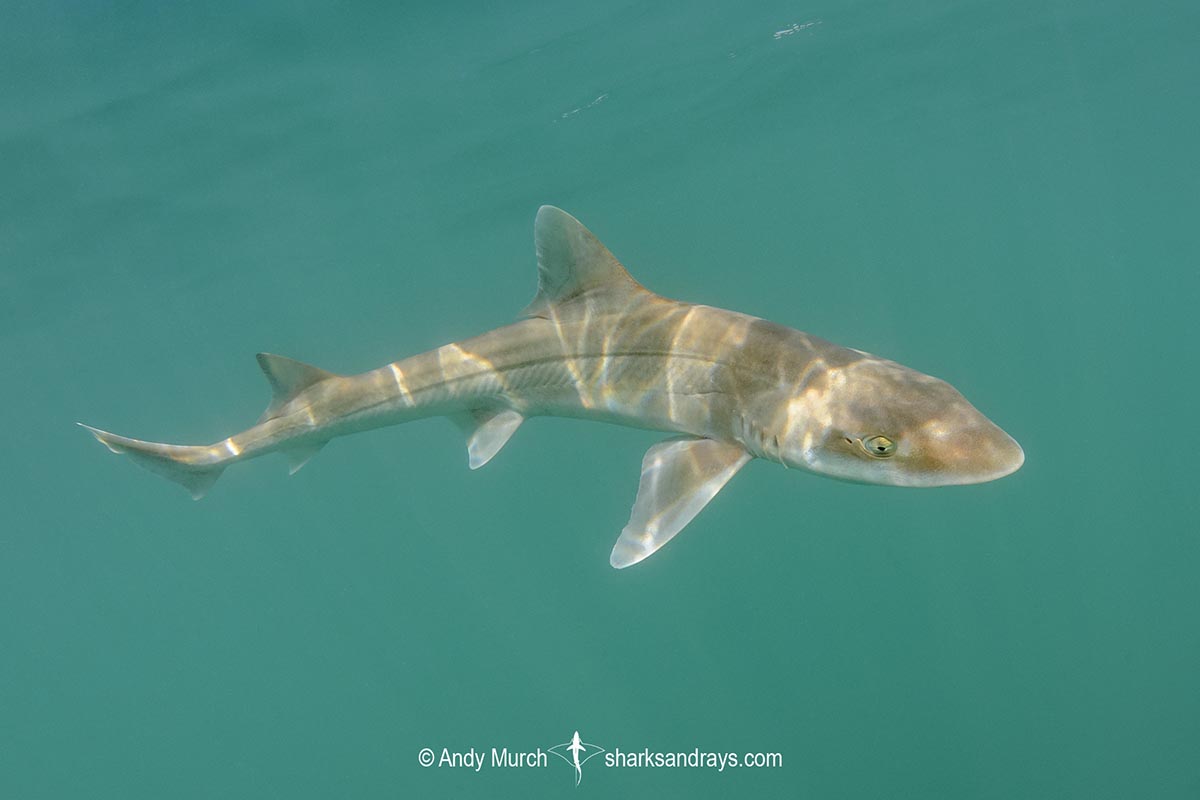
Conservation Status
LEAST CONCERN
The gray smoothhound is caught by recreational fishers and as bycatch in commercial fisheriesoff California. It is a targeted species and bycatch component in trawl and gillnet fisheries off Mexico. Due to its fast growth rate and early age at maturity, it appears to be able to withstand the current level of fishing pressure. However, more accurate species specific monitoring is required in the region.
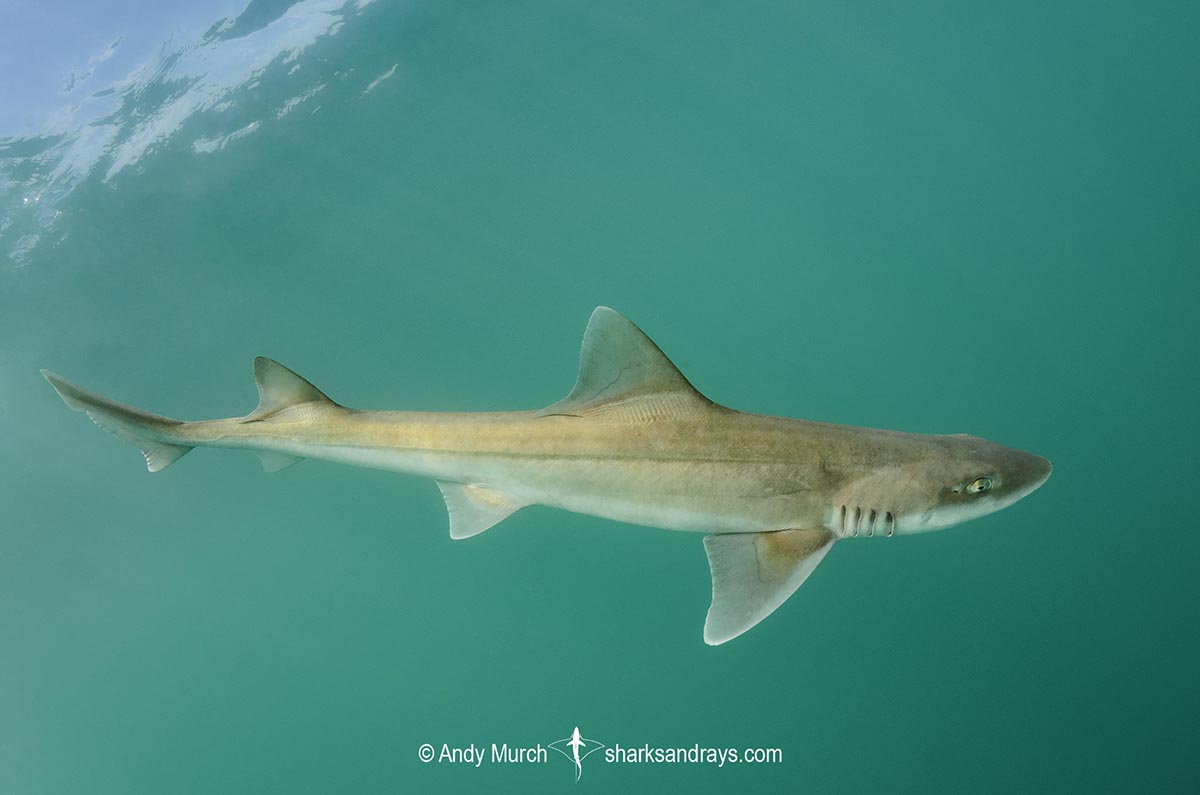
Habitat
A temperate water species inhabiting shallow muddy or sandy bays and estuaries. Present in deeper water closer to the equator. Surface to 256m. 2-45m in California.
Distribution
The gray smoothhound shark is found from Northern California to the tip of the Baja Peninsula and throughout the Sea of Cortez.
Reproduction
A viviparous species with yolk-sac placenta. 7-16 pups per litter. Gestation is approximately 11 months. Birthing occurs in the Gulf of California in April-May.
Diet
Predates heavily on crustaceans (stomatopods and crabs). Also feeds on small bony fishes and molluscs.
Behavior
Large aggregations of gray smoothhound sharks can be found in shallow water during the fall and winter months in central California. They are rarely seen at other times of year.
Reaction to divers
Rarely seen by divers. Retreats quickly when approached.
Diving logistics
One or two gray smoothhound sharks can sometimes be seen in the La Jolla area in the late summer, mixed in with large schools of leopard houndsharks that migrate through that area. I have seen one (in a handful of visits) while snorkeling at a spot called The Marine Room. In July-early September this a is a great place to see scores of leopard houndsharks, although the visibility is often poor and the ocean can be quite rough in the surf zone, where they are generally hunting.
Gray smoothhounds are occasionally seen from the bank and by kayakers at Elkhorn Slough Nature Reserve south of San Francisco. The water is not very clear in the muddy bay but the sharks have to traverse very shallow bars on their way into the slough so you can sometimes see their fins breaking the surface.
What’s new
View our full list of updates
Similar species
Brown Smoothhound Shark Distinguished by its dorsal and caudal fins that have frayed posterior margins.
Sicklefin Smoothhound Shark Distinguished by its more falcate first dorsal fin, more pointed head, and shorter upper labial furrows.

